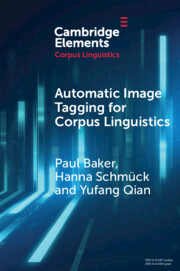Refine search
Actions for selected content:
128 results
Chapter 15 - Orthographic Arguments
- from Part III - New Genres
-
-
- Book:
- African Literature in Transition
- Published online:
- 23 October 2025
- Print publication:
- 06 November 2025, pp 294-312
-
- Chapter
- Export citation
Chapter 13 - Satirical Street Literature
- from Part III - New Genres
-
-
- Book:
- African Literature in Transition
- Published online:
- 23 October 2025
- Print publication:
- 06 November 2025, pp 257-274
-
- Chapter
- Export citation
Introduction
-
-
- Book:
- African Literature in Transition
- Published online:
- 23 October 2025
- Print publication:
- 06 November 2025, pp 1-12
-
- Chapter
- Export citation
Chapter 16 - ‘Usefully Unofficial’ Reading
- from Part III - New Genres
-
-
- Book:
- African Literature in Transition
- Published online:
- 23 October 2025
- Print publication:
- 06 November 2025, pp 313-332
-
- Chapter
- Export citation
Chapter 6 - Still Images, Moving Images
- from Part I - Producing Print
-
-
- Book:
- African Literature in Transition
- Published online:
- 23 October 2025
- Print publication:
- 06 November 2025, pp 129-146
-
- Chapter
- Export citation

Networks of Reception in the Eighteenth-Century British Press and Laurence Sterne
-
- Published online:
- 17 October 2025
- Print publication:
- 13 November 2025
-
- Element
- Export citation
3 - The Progressive Case against Antimonopolism
-
-
- Book:
- Toward an Inframarginal Revolution
- Published online:
- 26 September 2025
- Print publication:
- 16 October 2025, pp 45-99
-
- Chapter
- Export citation
6 - A Republic of Medical Letters and Professional Unity
-
- Book:
- Palestinian Doctors
- Published online:
- 12 September 2025
- Print publication:
- 02 October 2025, pp 178-213
-
- Chapter
- Export citation
“Is This Picture Not a Proof?”: Photojournalism and Anti-Colonial Politics in Lagos, 1930s–1950s
-
- Journal:
- African Studies Review / Volume 68 / Issue 2 / June 2025
- Published online by Cambridge University Press:
- 15 August 2025, pp. 227-251
-
- Article
- Export citation
Chapter 4 - The Mid Nineteenth-Century Press and Periodical Poetry
- from Part I - Transacting
-
-
- Book:
- Latinx Literature in Transition, 1444–1886
- Published online:
- 06 August 2025
- Print publication:
- 17 July 2025, pp 106-124
-
- Chapter
- Export citation

Automatic Image Tagging for Corpus Linguistics
- A Multimodal Study of News Representations of Islam
-
- Published online:
- 02 July 2025
- Print publication:
- 24 July 2025
-
- Element
-
- You have access
- Open access
- HTML
- Export citation
1 - A Victorian Conspectus
-
- Book:
- The Guitar in Victorian England
- Published online:
- 09 June 2025
- Print publication:
- 26 June 2025, pp 12-45
-
- Chapter
- Export citation

The Guitar in Victorian England
- A Social and Musical History
-
- Published online:
- 09 June 2025
- Print publication:
- 26 June 2025
1 - “These Things Happened”: The Rebellion
-
- Book:
- A Lesson on Race
- Published online:
- 22 May 2025
- Print publication:
- 05 June 2025, pp 12-29
-
- Chapter
- Export citation
3 - “A Good Fight”: George William Gordon
-
- Book:
- A Lesson on Race
- Published online:
- 22 May 2025
- Print publication:
- 05 June 2025, pp 50-67
-
- Chapter
- Export citation
6 - “Produce Your Cause”: The Bible
-
- Book:
- A Lesson on Race
- Published online:
- 22 May 2025
- Print publication:
- 05 June 2025, pp 106-122
-
- Chapter
- Export citation
4 - “Dead, Yet Speaketh”: Robert Johnson
-
- Book:
- A Lesson on Race
- Published online:
- 22 May 2025
- Print publication:
- 05 June 2025, pp 68-86
-
- Chapter
- Export citation
Introduction
-
- Book:
- A Lesson on Race
- Published online:
- 22 May 2025
- Print publication:
- 05 June 2025, pp 1-11
-
- Chapter
- Export citation
Chapter 3 - Centro America in San Francisco
- from Part I - Space
-
-
- Book:
- Latinx Literature in Transition, 1848–1992
- Published online:
- 10 April 2025
- Print publication:
- 17 April 2025, pp 54-72
-
- Chapter
- Export citation
3 - Why Are Some States More Corrupt than Others?
- from Part I - How Corrupt Is America?
-
- Book:
- Corruption in America
- Published online:
- 21 March 2025
- Print publication:
- 03 April 2025, pp 33-54
-
- Chapter
- Export citation
